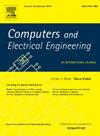vDefender: An explainable and introspection-based approach for identifying emerging malware behaviour at hypervisor-layer in virtualization environment
IF 4
3区 计算机科学
Q1 COMPUTER SCIENCE, HARDWARE & ARCHITECTURE
引用次数: 0
Abstract
Virtualization can be defined as the backbone of cloud computing services, which has gathered significant attention from organizations and users. Due to the increasing number of cyberattacks, virtualization security has become a crucial area of study. In this paper, we propose an explainable and introspection-based malware detection approach called vDefender for fine-grain monitoring of virtual machine (VM) processes at the hypervisor to identify the malicious behaviour of 17 different malware families of Windows exhibiting new evolving behaviour. Initially, it performs a basic security check to detect hidden processes and ensures the presence of security-critical processes. Then, deep memory introspection is performed using a software breakpoints injection approach to intercept the execution of processes. Various process activity logs are captured that include process-related, file manipulation, kernel heap object creation, exception-related activities, etc. Hybrid feature vectors are derived from these logs, which are reconstructed using the proposed mechanism to eliminate the redundant behaviour. The features are then learnt using Random Forest (RF) algorithm to classify distinct malware families. The interpretation and analysis of RF results involve the use of explainability techniques. The proposed approach achieves an accuracy of 95.49%, F1-score of 95.82% with 0.05% false alarms when evaluated using an emerging malware dataset. The contribution includes a comprehensive discussion of results, accompanied by a comparative analysis of current approaches that gives readers insight towards future research directions.
vDefender:一种可解释的、基于内省的方法,用于识别虚拟化环境中管理程序层新出现的恶意软件行为
虚拟化可以被定义为云计算服务的支柱,它已受到企业和用户的极大关注。由于网络攻击日益增多,虚拟化安全已成为一个重要的研究领域。在本文中,我们提出了一种名为 vDefender 的可解释和基于内省的恶意软件检测方法,用于在管理程序上对虚拟机(VM)进程进行细粒度监控,以识别 17 种不同的 Windows 恶意软件家族的恶意行为,这些恶意软件家族表现出不断演变的新行为。最初,它执行基本的安全检查,以检测隐藏的进程,并确保安全关键进程的存在。然后,使用软件断点注入方法进行深度内存反省,以拦截进程的执行。捕获的各种进程活动日志包括进程相关活动、文件操作、内核堆对象创建、异常相关活动等。从这些日志中提取混合特征向量,并使用建议的机制对其进行重构,以消除冗余行为。然后使用随机森林(RF)算法学习这些特征,对不同的恶意软件家族进行分类。RF 结果的解释和分析涉及可解释性技术的使用。在使用新出现的恶意软件数据集进行评估时,所提出的方法达到了 95.49% 的准确率和 95.82% 的 F1 分数,误报率为 0.05%。论文包括对结果的全面讨论,以及对当前方法的比较分析,为读者指明了未来的研究方向。
本文章由计算机程序翻译,如有差异,请以英文原文为准。
求助全文
约1分钟内获得全文
求助全文
来源期刊

Computers & Electrical Engineering
工程技术-工程:电子与电气
CiteScore
9.20
自引率
7.00%
发文量
661
审稿时长
47 days
期刊介绍:
The impact of computers has nowhere been more revolutionary than in electrical engineering. The design, analysis, and operation of electrical and electronic systems are now dominated by computers, a transformation that has been motivated by the natural ease of interface between computers and electrical systems, and the promise of spectacular improvements in speed and efficiency.
Published since 1973, Computers & Electrical Engineering provides rapid publication of topical research into the integration of computer technology and computational techniques with electrical and electronic systems. The journal publishes papers featuring novel implementations of computers and computational techniques in areas like signal and image processing, high-performance computing, parallel processing, and communications. Special attention will be paid to papers describing innovative architectures, algorithms, and software tools.
 求助内容:
求助内容: 应助结果提醒方式:
应助结果提醒方式:


